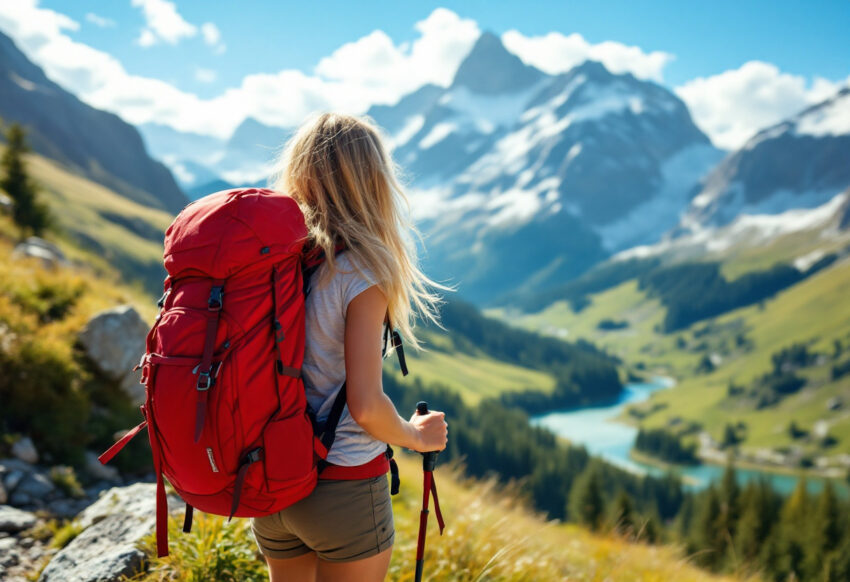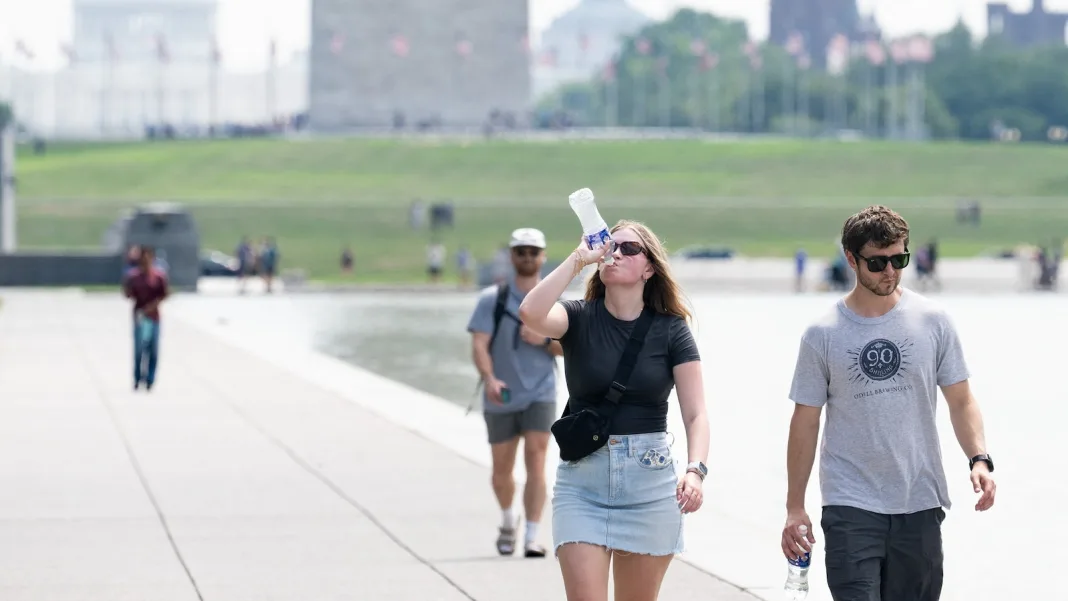Monday, July 28, 2025

Adventure tourism has become a significant force in the global travel industry, attracting millions of travelers each year who seek exhilarating experiences that go beyond typical sightseeing. From scaling majestic mountain peaks to experiencing the thrill of scuba diving in remote coral reefs, adventure tourism offers a unique blend of physical activity, cultural immersion, and natural exploration. According to a report by Spherical Insights & Consulting, the global adventure tourism market is expected to grow substantially, from USD 364.3 billion in 2023 to USD 1,450 billion by 2033, at a compound annual growth rate (CAGR) of 14.81%. This explosive growth is driven by rising consumer demand for authentic, personalized travel experiences that connect them with nature and different cultures.
The market is divided into hard and soft adventure segments, catering to both risk-seeking adventurers and those seeking less physically demanding activities. Hard adventure includes extreme sports such as mountaineering and skydiving, while soft adventure includes activities like hiking, wildlife safaris, and cultural tours. With increasing interest in eco-friendly and sustainable travel, adventure tourism is rapidly expanding to accommodate a broad range of travelers, from families and older individuals to thrill-seeking solo adventurers. The following sections explore the factors fueling this growth, the key destinations driving demand, and the impact of digital platforms on adventure travel bookings.
Key Segments Driving the Growth of Adventure Tourism
The global adventure tourism market can be divided into several key segments, each offering unique opportunities for travelers. These segments include activity types (hard and soft adventure), group sizes (solo, couples, families, and groups), and booking modes (travel agents, direct bookings, and marketplace platforms). Each of these segments plays a vital role in shaping the future of adventure tourism, making it more accessible and diverse.
1. Activity Types: Hard vs. Soft Adventure
- Hard Adventure: This segment includes high-risk activities that require significant physical preparation and expertise, such as mountaineering, scuba diving, skydiving, and bungee jumping. These activities are typically sought after by adventure enthusiasts who crave the thrill of testing their physical and mental limits.
- Soft Adventure: In contrast, soft adventure encompasses activities with a lower risk profile, such as hiking, kayaking, wildlife safaris, and cultural tours. These activities attract a broader audience, including families, older travelers, and those who prefer less physically demanding experiences. The soft adventure segment is anticipated to hold the largest share of the adventure tourism market, driven by rising consumer interest in eco-tourism and experiential travel.
2. Group Segments: Solo, Couples, Families, and Groups
- Solo Travelers: Solo adventurers are increasingly turning to adventure tourism for self-discovery and personal growth. Solo travelers are drawn to activities that allow them to explore remote destinations, meet new people, and connect with nature in a meaningful way.
- Couples: For couples, adventure tourism offers an opportunity to bond over shared activities, such as hiking in the Alps, exploring tropical rainforests, or embarking on a wildlife safari. Adventure tourism for couples is also growing, especially in the form of destination weddings and honeymoon packages that include thrilling experiences.
- Families: Families are increasingly seeking soft adventure experiences that allow them to spend quality time together while participating in activities like hiking, zip-lining, or exploring cultural heritage sites. Adventure tourism is becoming more family-friendly, with operators offering customized experiences for all ages.
- Groups: Group travel remains one of the largest segments of the adventure tourism market. Organized group tours provide travelers with guided experiences, enhanced safety measures, and cost savings through bulk bookings. This segment appeals to adventure tourists looking for structured itineraries and group camaraderie.
3. Booking Modes: Direct, Travel Agents, and Online Platforms
- Direct Bookings: The rise of digital booking platforms has revolutionized the way travelers plan their adventure trips. Platforms like Airbnb, Booking.com, and specialized adventure tourism websites allow travelers to easily book their adventure experiences directly, offering more flexibility and customization in their itineraries.
- Travel Agents and Event Planners: Traditional travel agents still play a significant role in the adventure tourism market, particularly for high-end tours or more complex travel arrangements. Event planners also contribute to the market’s growth, particularly in organizing group tours, corporate retreats, and destination weddings.
- Marketplace Platforms: The emergence of online marketplaces that connect travelers with local adventure operators has made it easier for travelers to find unique experiences. These platforms offer a wide variety of adventure activities at different price points, appealing to both budget-conscious travelers and those seeking premium experiences.
Top Adventure Tourism Destinations and Regional Growth
As demand for adventure tourism grows, certain regions and destinations are emerging as hotspots for thrill-seekers and nature enthusiasts. The growing appeal of these destinations is driven by their natural beauty, diverse landscapes, and the availability of both hard and soft adventure activities.
1. Europe: A Premier Hub for Adventure Tourism
Europe is a major player in the global adventure tourism market, with its diverse landscapes and well-developed infrastructure. From the rugged Alps to the scenic fjords of Scandinavia, Europe offers a wide range of adventure activities, including skiing, hiking, mountaineering, and water sports. The region’s commitment to sustainability, strong safety standards, and excellent transport networks make it an attractive destination for adventure travelers.
Key destinations in Europe include:
- Switzerland: Known for its alpine scenery, Switzerland offers world-class skiing, mountaineering, and hiking opportunities.
- Norway: Norway’s fjords, mountains, and coastal regions provide a perfect setting for kayaking, hiking, and wildlife safaris.
- France: The French Alps and Pyrenees are popular among adventure tourists for skiing, rock climbing, and cycling.
2. Asia-Pacific: Rapid Growth in Adventure Tourism
The Asia-Pacific region is expected to see the fastest growth in adventure tourism, fueled by rising disposable incomes, diverse landscapes, and increasing demand for adventure sports. Countries like India, China, Japan, and New Zealand are becoming major destinations for adventure travelers, offering a mix of cultural experiences and outdoor activities.
Key destinations in Asia-Pacific include:
- New Zealand: Famous for its bungee jumping, skydiving, and hiking trails, New Zealand is a top destination for adventure seekers.
- Japan: Japan’s unique blend of traditional culture and natural beauty offers adventure tourists opportunities for hiking, skiing, and exploring volcanoes.
- India: India’s diverse landscapes, from the Himalayas to the beaches of Goa, attract adventurers interested in trekking, rafting, and wildlife safaris.
Challenges and Opportunities in Adventure Tourism
While the adventure tourism market is expanding, it faces several challenges that could impact its growth. These include safety concerns related to high-risk activities, the seasonal nature of many adventure sports, and the environmental impact of increased tourism. Addressing these challenges presents opportunities for the industry to innovate and adapt.
1. Safety and Risk Management
Adventure tourism often involves activities that carry inherent risks, such as mountaineering, scuba diving, and skydiving. Ensuring safety is a top priority for operators, and stricter regulations, insurance policies, and safety measures are needed to mitigate risks. Offering safer, well-managed experiences can help build trust with travelers and ensure the long-term growth of the industry.
2. Environmental Sustainability
As more tourists visit remote destinations for adventure activities, there is growing concern about the environmental impact of increased foot traffic in fragile ecosystems. Sustainable practices, such as minimizing waste, reducing carbon footprints, and protecting biodiversity, are essential to preserving these destinations for future generations.
3. Seasonal and Weather Dependency
Many adventure tourism activities are highly seasonal, depending on weather conditions. For example, skiing is only possible during winter months, while hiking may be restricted during rainy seasons. Diversifying adventure offerings to include year-round activities, or targeting destinations that offer different types of adventure throughout the year, can help mitigate this challenge.
Conclusion: The Future of Adventure Tourism
The adventure tourism market is set to experience significant growth in the coming years, driven by consumer demand for personalized, eco-friendly travel experiences and the increasing popularity of digital platforms. Europe and Asia-Pacific are expected to be key regions for market expansion, while new destinations continue to emerge as sought-after adventure tourism hubs.
With its diverse range of activities and experiences, the adventure tourism sector offers something for everyone—from extreme thrill-seekers to those looking for more relaxed, immersive travel experiences. As the market grows, operators must continue to prioritize safety, sustainability, and innovation to meet the evolving needs of adventure travelers.







